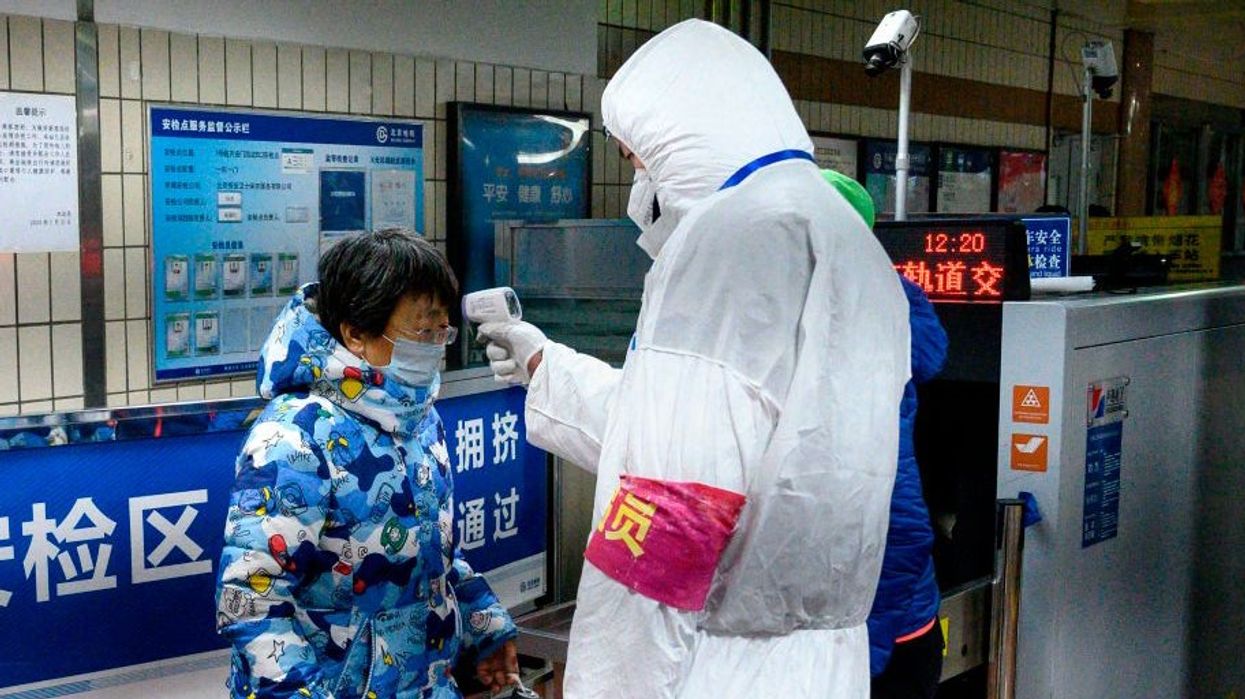Greg Evans
Jan 28, 2020
Unfortunately, we live in an era where no matter the story, people will exploit a topic for their own personal satisfaction and spread fake news at the expense of others.
This year we have already seen multiple images and videos supposedly taken from the Australian wildfires which weren't linked to the tragic scenes from Down Under in the slightest.
Sadly this is now happening with the outbreak of the coronavirus in China, which has already killed more than 100 people, with more than 4000 people reported to have been infected.
Now the virus is starting to spread overseas with around 73 people tested for the virus in the UK, all of which came back as negative.
Whenever there is an outbreak of a relatively unknown disease, people can tend to worry about what will come next especially when they see images of the city of Wuhan, where the virus originated, on lock down.
However, if you are concerned about what is happening in China and have seen your newsfeeds littered with stories and speculation about the coronavirus, please be vigilant and think twice before you decide to share or interact with a post.
Here are a few examples of things that you should be looking out for.
Some Asian foods contain traces of the disease
A report by Mashable states that fake information about the coronavirus being found in pieces of popular Asian food is being spread on Facebook and Instagram in Australia
The story claims that the virus has been found in Yakult, wagyu beef, Nongshim Onion Ring snacks, peach ice tea, instant noodles, fortune cookies, Red Bull and even rice.
The post also claims that areas of Western Sydney which have large Chinese populations are contaminated, which has been confirmed by 'The Bureau of Diseaseology' which doesn't actually exist.
New South Wales Health has since moved in to debunk the post as a hoax and that the people in Sydney are not at risk.
The disease comes from eating 'bat soup'
Reports from some major publications have appeared to link the virus to the consumption of delicacies that can be brought from Wuhan market.
These have include 'bat soup' and a type of fried rat with videos and images of the two meals being shared on social media with racist connotations attached to them.
Although the images are real, their connections to the virus are completely false.
Research from the Institut Pasteur of Shanghai has found that the most recent strand of the disease has been traced back to bats but there has been no direct connection between bats and humans.
Another video of an influencer name Wang Mengyun eating a bat has been flagged as fake.
According to news.com.au Mengyun has apologised as the video was actually from 2016 and that the video was actually recorded in Palau and not China.
She explained that she has received a downpour of hate mail because of the video and apologised for promoting bats as a delicacy.
'Thousands' are already dead
As already stated, more than 100 people have died and more than 4000 have been infected but it has not grown any worse beyond those figures.
A report by 7news shows that the conservative blogger, Hal Turner of the Turner Radio Network, reported earlier this month that 112,000 people have died and that 2.8 million were infected.
Turner has also fake images of 'dead people' lining the sides of streets, public transport and hospital corridors and the "thousands of dead are being taken directly to incinerators."
Turner's unsourced reporting also claimed that the virus is triggered by 'rapid kidney failure' but in reality has been linked to pneumonia.
'Mass graves' are being built
An image of a construction site that is building two new hospitals in Wuhan to deal with those infected has been shared with the speculation that it is actually a mass grave.
The Chinese government confirmed the construction of the facility in the past few days and they are expected to be completed by February 5.
However, people are beginning to spread the images of digger on the site claiming that they are actually building 'mass graves' to cope with the dead and not a hospital.
The disease is a conspiracy theory
Yep, it was only a matter of time before conspiracy theorist latched onto this story.
Several prominent pro-Trump QAnon accounts have spread rumours that the disease is being used as a distraction tactic to stop Trump getting reelected in this year's election.
The Daily Beast has reported that prominent conspiracy theorist such as Jordan Sathler and 'Chief Police 2' have shared posts and videos claiming the virus is a 'fad' and that consuming 'Miracle Mineral Solution' a liquid described by the Food and Drug Administration as a 'dangerous bleach' can stop people from contracting the disease.
There have also been false claims made by anti-vaxxers that the disease was patented by the Bill and Melinda Gates Foundation at the Pirbright Institute in Surrey in 2015 as a way of making more money.
It should be noted, that at the time of writing, no vaccination for the coronavirus has actually been discovered, making these claims even more incorrect.
Pirbright have developed a heavily weakened version of the virus that could be used as a vaccine on animals, mostly birds, with respiratory problems but they do not currently work with any version of the disease that would affect humans.
Speaking to BuzzFeed, Teresa Maughan, a spokesperson for the Pirbright Institute confirmed that their research wasn't funded by the Gates Foundation and their virus doesn't affect humans.
The patented work cited in the conspiracy theories involved infectious bronchitis virus (IBV) only, and we made four changes in the gene responsible for replicating the virus’s genetic material.
This has weakened the virus so it is no longer able to cause disease and has potential to be used as a vaccine, but has not yet been developed.
The patented work was completed in 2015 and is not funded by the Bill & Melinda Gates Foundation.
So with all this information in mind, the next time you see a post about the coronavirus that looks suspicious please do some research and think before you click share.
More: Panicked crowds cram into Wuhan hospital amid coronavirus outbreak
Top 100
The Conversation (0)














